Peruvian cuisine has been conquering taste buds around the world and attracting visitors to Peru for a few years now, but few people understand just how influential the cuisine of one country has been on local dishes. Ceviche, lomo saltado, pollo saltado, and causa rellena are expanding people’s previous view of Peru as just being about Machu Picchu, playful llamas and boiled potatoes.
But within the wildly varied Peruvian food spectrum, there’s one branch that deserves some special attention though. We’re talking about Peruvian Chinese food, locally known as chifa.
Here’s everything you need to know about the delicious fusion universe that is chifa peruano!

Sweet and sour origins Of Peruvian Chinese Food
The roots of the chifa tradition lie in the first big wave of Chinese migration to Peru, which occurred in the mid-nineteenth century. After slavery had been abolished, Peruvian plantation owners and guano entrepreneurs looked for another source of inexpensive labor. 100,000 Chinese immigrants arrived in Peru shortly after.
Working conditions were harsh and the pay was poor, but they were allowed to leave their initial contract after 8 years. Some of these men decided to set up their very own Peruvian-Chinese restaurants. Many chose to live and work in the area close to the street of Capón in central Lima.
Calle Capón and the surrounding streets survived for many difficult years, although until the 1990s when chifa’s popularity exploded and the area started to flourish.

Oriental ingredients adopted by Peru
Not only has this Chinese influence in Peru given rise to a unique fusion cuisine, it is also responsible for contributing some absolutely indispensable ingredients to Peruvian cooking. Rice, soy sauce, ginger, and wok stir-frying are all imports from Asia.
One of the signature dishes of Peruvian food is a clear example of the adoption of Asian cooking methods: lomo saltado. Lomo Saltado is a stir fry prepared in a wok with soy sauce, one of the most important ingredients in this dish, and a direct import from China.
And lomo saltado is always served with rice. A delicious example of a successful fusion dish that is most definitely here to stay.
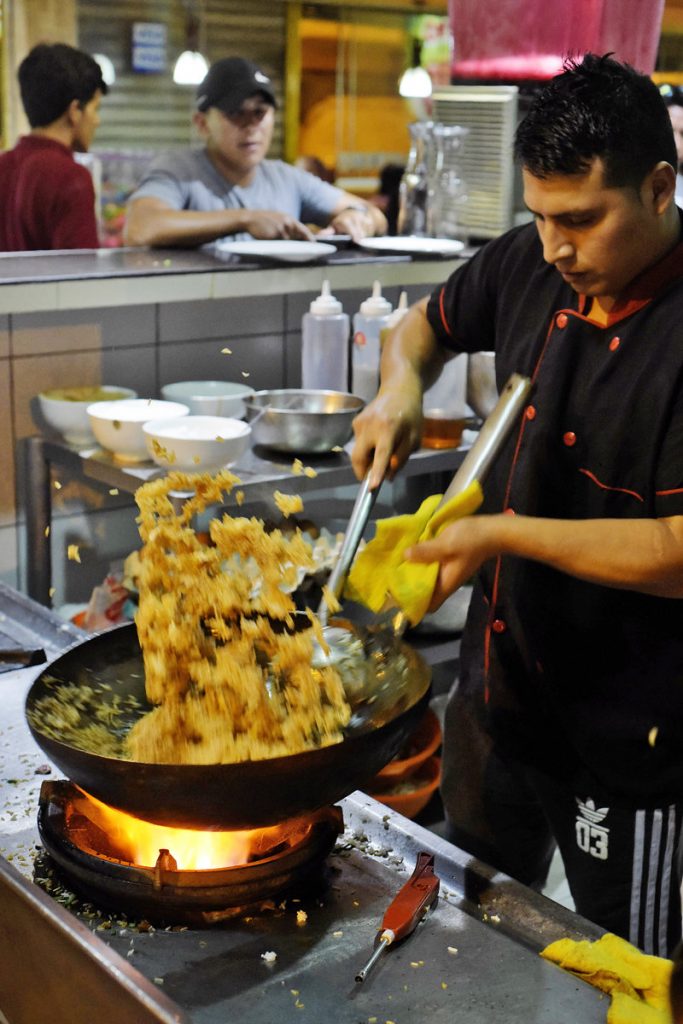
Oodles of noodles, thanks to the crisis
So we now know that chifa had been around since the beginning of the 20th century. But its impact in wider Peru was modest for several decades. Up to the mid-eighties, there weren’t more than a few dozen chifa restaurants outside the area of Calle Capón, serving only a la carte dishes.
It wasn’t until the severe economic crisis in the eighties when chifa restaurants decided to offer set menus at a lower cost in order to survive. This helped make the food more accessible (and more appealing) to the wider public.
As the country began to recover from the crisis in the 90s, chifa had gained plenty of new followers. The number of restaurants grew exponentially in Lima (particularly in the Barrio Chino area) and the rest of the country.

Inca Kola – The beverages of choice
Ask a cross-section of Peruvians what beverage they like to drink with their arroz chaufa. An overwhelming majority will say Inca Kola, arguing that its flavor combines best with chifa. While taste is a subjective topic, the fact is that this beverage is consumed in vast quantities in Peru. So there must be something to it.
If the most quintessentially Peruvian soda isn’t your cup of tea, Chinese Peruvian restaurants also offer other brands of soda, water, lemonade or jasmine tea, the latter obviously a clear Chinese tradition.
The restaurant Chifa Haiya (Avenida Brasil 3627) in Lima (featured in photos below) is currently introducing iced tea to its menu. The owners told us this is a very common cold drink served at restaurants in modern-day China.
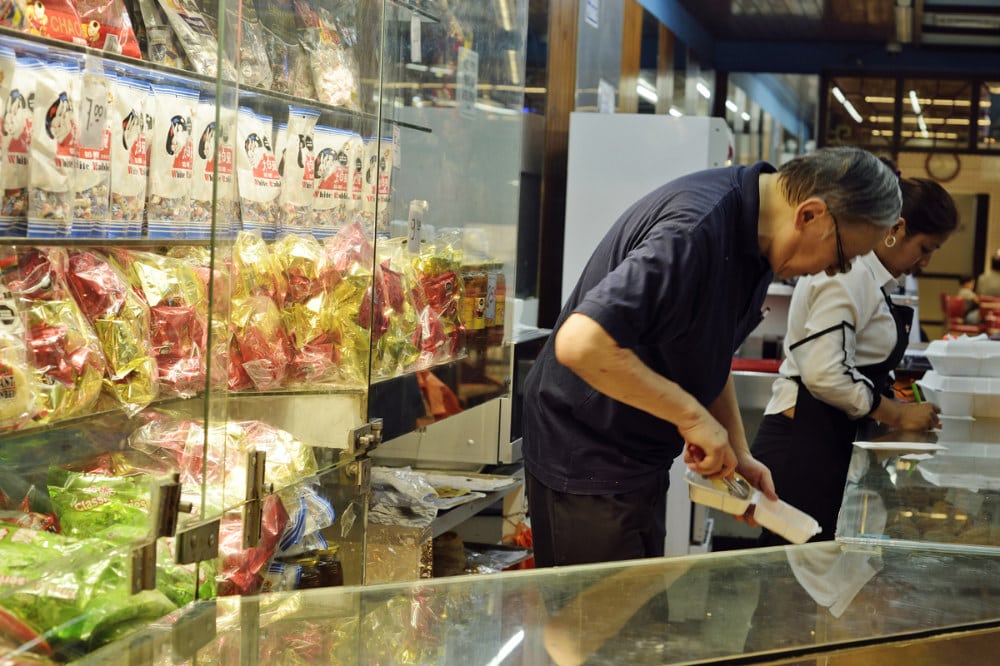
Indispensable dishes
This list would be incomplete without mentioning the most popular Chinese Peruvian meal: a set menu of wonton soup and arroz chaufa. This soup is a very light chicken broth with noodles, some Chinese vegetables, and boiled wonton with some meat in it. Not too heavy, and leaves plenty of room for the hearty entrée that’s to follow.
Arroz chaufa is basically stir-fried rice, usually prepared with ginger, spring onions, soy sauce, egg tortilla, and either slices of pork, meat, chicken breast, seafood, quail eggs or mushrooms. It can be ordered as an entrée, but is also often a side dish consumed with the main dish. This chifa dish is tasty, versatile and filling, and since it’s quite easy to prepare, it’s also the chifa dish favored in Peruvian homes.
Other popular chifa dishes include tallarín saltado de pollo which is like tallarín con pollo but with Asian influences.
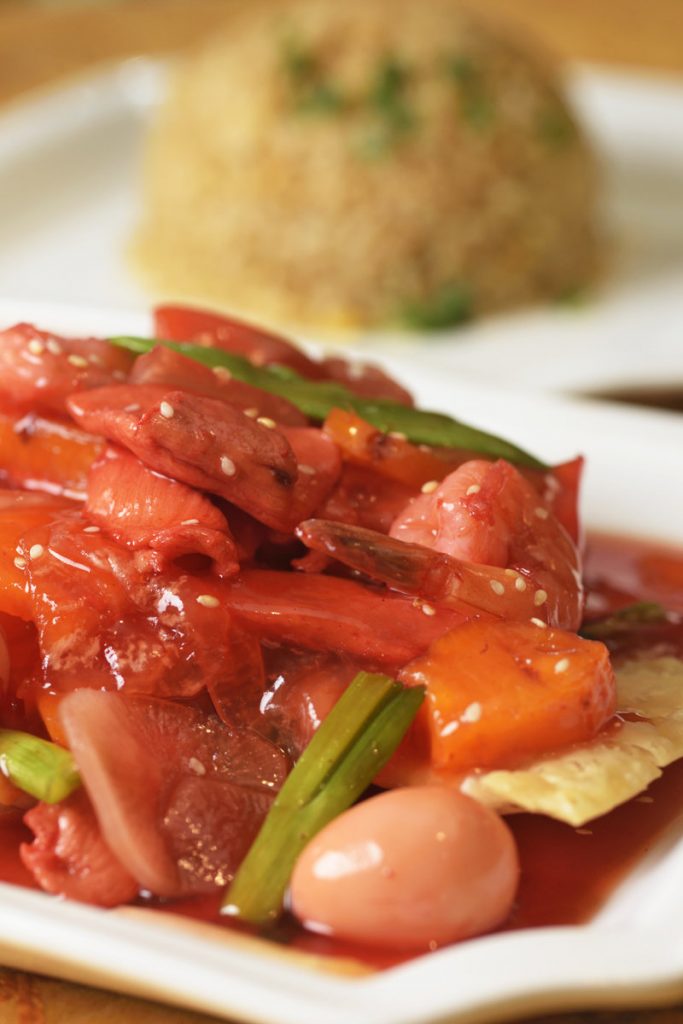
What’s in a name?
Just as traditional Chinese ingredients took root in wider Peruvian cuisine, certain words of Chinese origin became commonly-used words by Peruvians. Firstly, of course, there’s the word chifa, which describes both Chinese-Peruvian fusion food as well as the restaurants that sell it. This word comes from the expression “to eat rice” or “have you eaten yet” in Cantonese.
The name of the most popular dish, arroz chaufa, also hails from Cantonese. Chaufan means fried rice. Then there’s the word sillao for soy sauce (pollo al sillao is a popular dish), and quión for ginger.
But the most interesting word has to be taypá. We couldn’t track down the exact etymological origins, but it’s commonly known to mean “generous serving”. So if you’re extra hungry, make sure to say “Sírvame bien taypá, por favor” next time you order a chifa, or any other Peruvian dish for that matter!
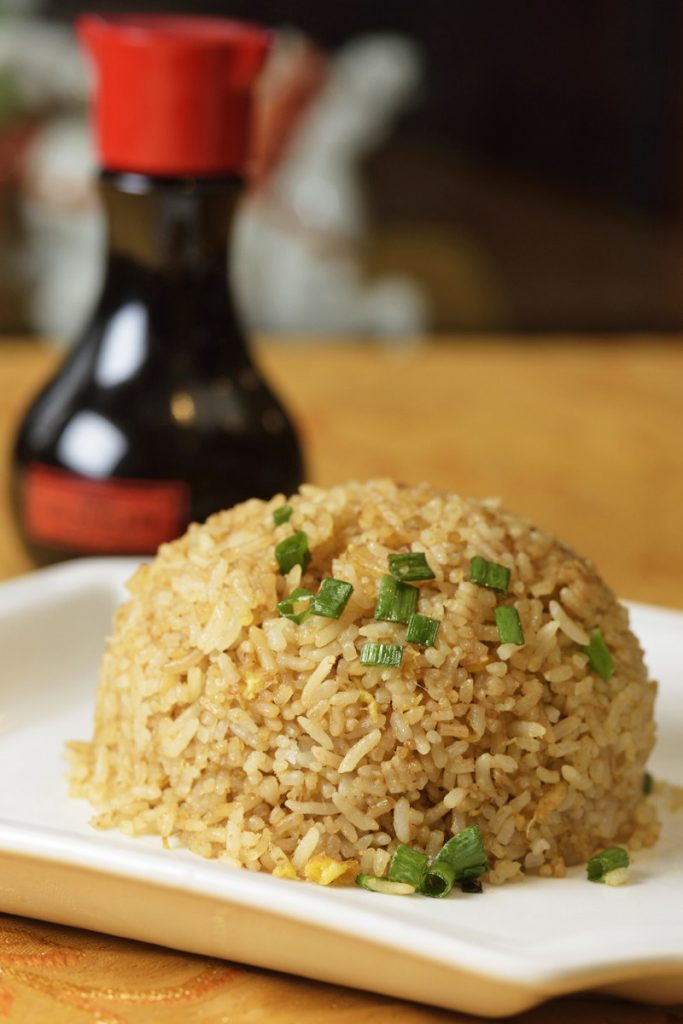
Variety is the spice of life
Chifa is already a fusion of two cuisines but is also subject to further regional variations. Due to the versatility of its dishes, recipes can easily be altered to incorporate ingredients only available or popular in a specific region. Examples include guinea pig, some types of fish and seafood, and meats from jungle inhabiting animals such as paca and peccary.
Vegetarianism and veganism are both on the rise in Peru too. And restaurants are responding by transforming standard chifa dishes.
Another peculiar adaptation comes from the Peruvian tradition of serving foods with a little bowl of spicy ají amarillo sauce and chunks of lime, standard personal seasoning kits that every diner applies according to their preference.
Aji amarillo chili pepper is not a traditional part of chifa food at all, but you will regularly see clientele asking for these because it has now become such a habit.
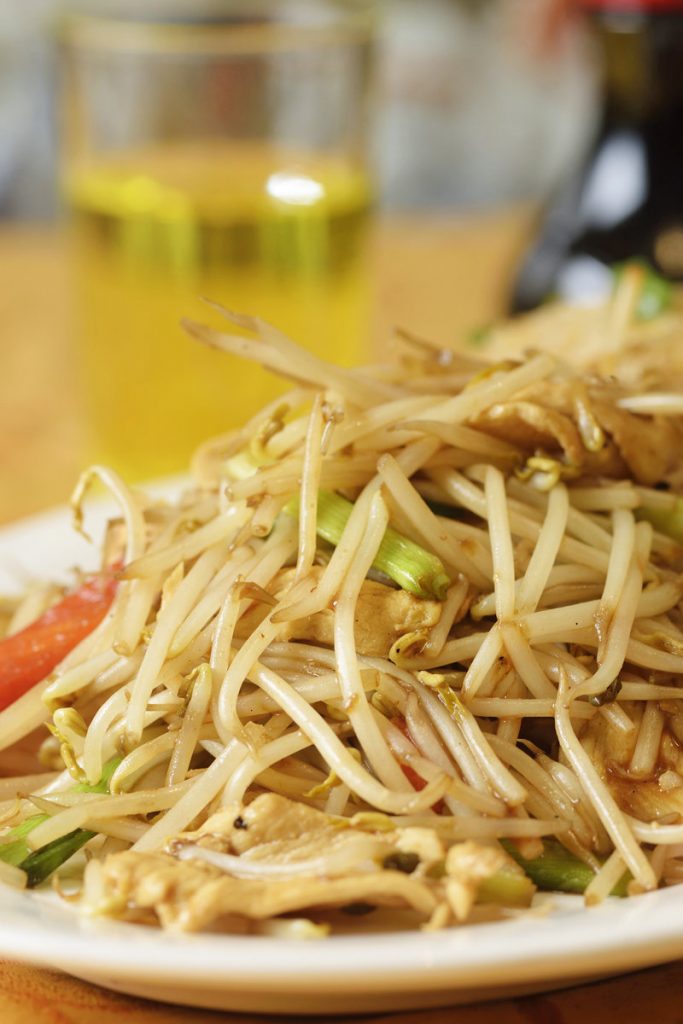
A long-term affair
The Chinese population in Peru is one of the largest in Latin American countries. Numbers have been bolstered by additional waves of Chinese migration since the initial wave in the 19th century. Increased immigration generally creates more demand for chifa restaurants. And this, in turn, creates interesting opportunities for Chinese citizens considering opening a business in Peru.
Trade relations between Peru and China are thriving. Chinese business people and their families now migrate to Peru to work in many business sectors. And more and more Peruvian students choose to study Chinese. Some even study at Chinese universities, further strengthening the ties between the two countries.
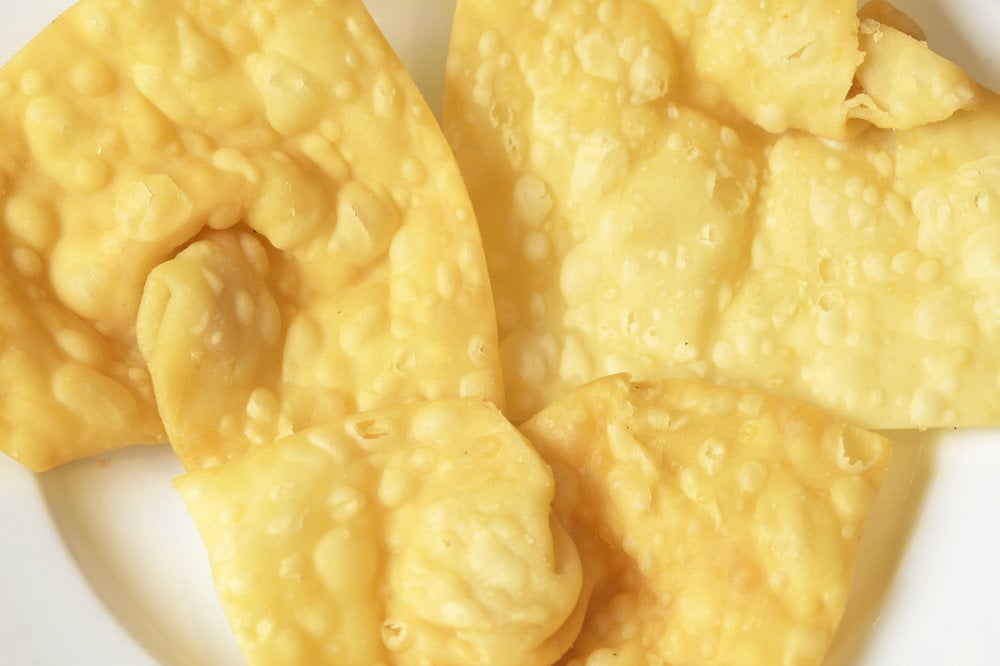
A stir-fry for every budget
The success of chifa owes much to its adaptability, and this explains why it’s now such a firm favorite across the socioeconomic spectrum. You’ll find street stalls around the country offering little styrofoam plates with a steaming portion of fried rice for as little as $ 1.50.
Highly sophisticated gourmet versions of traditional dishes or chifa-inspired culinary fusion cuisine, costing USD$50 and up, appear on the menus of Peruvian five-star restaurants. All of the current top Peruvian chefs have made a foray into chifa dishes, often with incredible results.

The Best Chifa in Lima [Barrio Chino]
In case you’re planning a visit to Lima and would like to find chifa, here are our suggestions for places to try this delicious Peruvian Asian food.
Many agree the best chifa restaurant in Miraflores is Madam Tusan, the Chinese fusion restaurant created by acclaimed chef Gastón Acurio, which has now also opened venues in other parts of Lima.
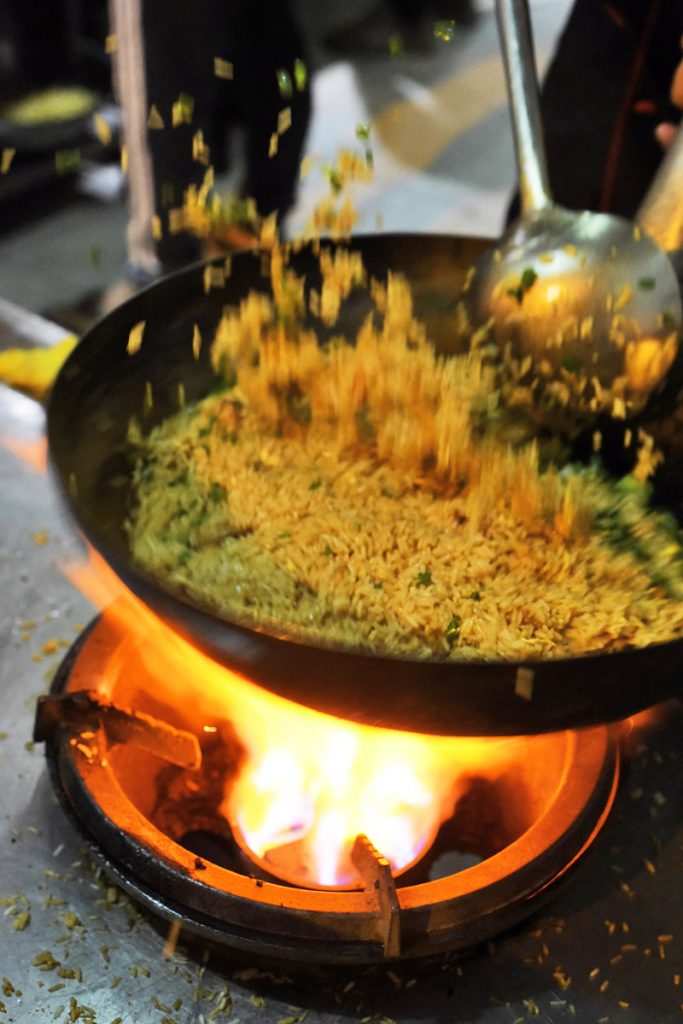
Wa Lok also has a solid reputation for its chifa restaurants in Miraflores and the center of Lima.
For those looking to try as many different dishes as possible, Salón Capón is an excellent buffet option.
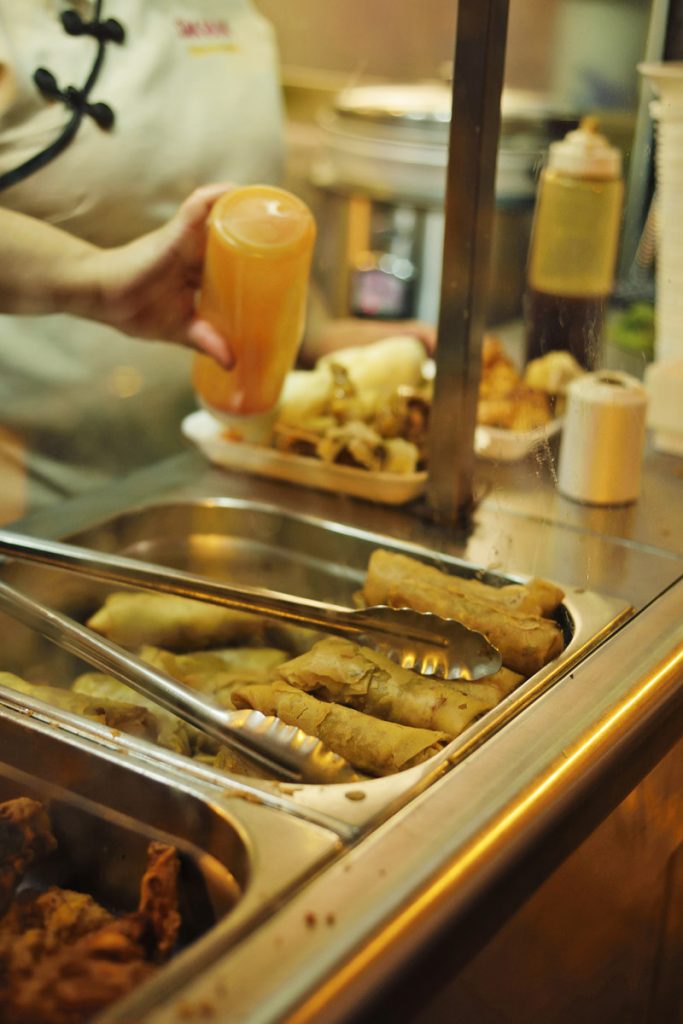
And if you want to explore one of the most traditional chifa restaurants, one that has been open for several decades, head over to Chung Yion in Jirón Unión, Barranco.
One last fun fact: the hugely popular late-night TV programme “Wantan Night” was actually named after the wontons used in chifa, demonstrating just how deeply rooted Chinese cuisine is in Peru.
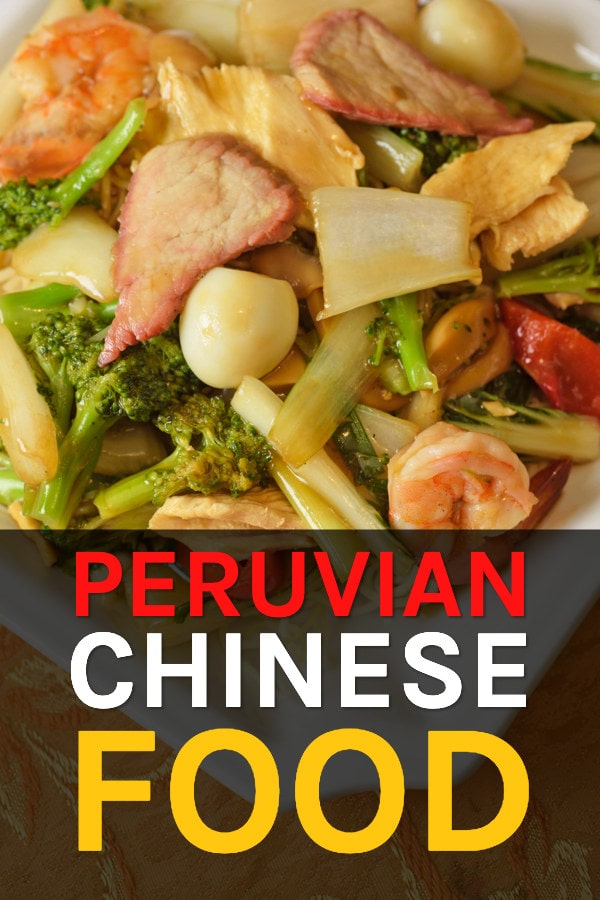
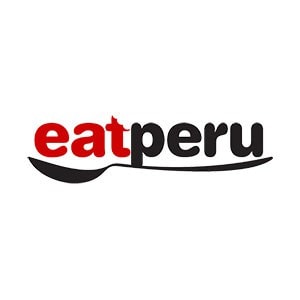
Peruvian foodie. I’ve been writing about the food of Peru for over 10 years. Read more about the Eat Peru team here

Leave a Reply